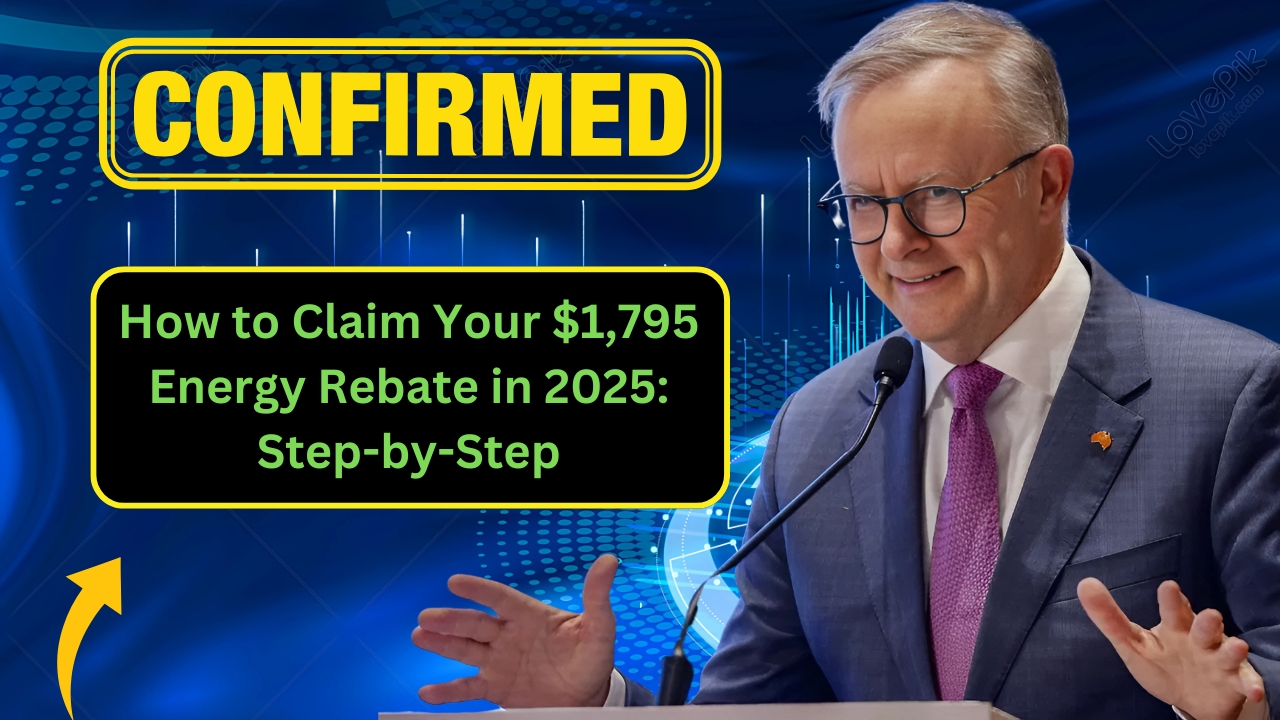Energy Rebate : The year 2025 brings significant opportunities for homeowners to reduce their energy costs through various federal tax credits and rebate programs. Understanding how to navigate these programs can save you thousands of dollars while making your home more energy-efficient and environmentally friendly.
Understanding the Federal Energy Tax Credit System
The federal government offers substantial tax credits for energy-efficient home improvements through the Internal Revenue Service. These programs can provide up to $3,200 in annual tax credits, combining $1,200 for general energy efficient home improvements with up to $2,000 for qualifying heat pumps, water heaters, and biomass equipment.
How Federal Energy Tax Credits Work
Think of tax credits as direct discounts on the taxes you owe to the federal government. Unlike tax deductions that reduce your taxable income, credits provide dollar-for-dollar reductions in what you actually pay. If you owe $4,000 in federal taxes and qualify for $2,000 in energy credits, you’ll only pay $2,000.
Maximum Available Credits and Rebates for 2025
The federal energy incentive landscape for 2025 offers multiple pathways to savings:
Federal Tax Credits Through IRS Form 5695
Energy Efficient Home Improvement Credit (Section 25C)
- Maximum annual credit: $1,200 for qualifying energy property and improvements
- Additional $2,000 annually for heat pumps, heat pump water heaters, and biomass stoves/boilers
- Combined maximum: $3,200 per year (30% of project costs up to these limits)
Residential Clean Energy Credit (Section 25D)
- 30% of costs for solar, wind, geothermal, fuel cells, and battery storage
- Available through 2032, with reduced percentages in 2033-2034
Upcoming Federal Rebate Programs
Home Energy Rebates (HOMES Program)
- Up to $8,000 for projects that significantly reduce household energy use
- Expected to launch Fall 2025 in most states
Home Electrification and Appliance Rebates (HEAR)
- Up to $8,000 for qualifying appliances in low-moderate income households
- Limited to households meeting Area Median Income requirements
Step-by-Step Process to Claim Your Energy Tax Credits
Step 1: Determine Your Eligibility
Before making any purchases, confirm that your situation qualifies:
Your home must be your primary residence where you live most of the year. The home must be located in the United States and can include houses, condominiums, mobile homes, houseboats, and manufactured homes. Rental properties and second homes generally don’t qualify for most credits, though some exceptions exist.
Understanding the income requirements helps you plan appropriately. While most tax credits have no income limits, the upcoming rebate programs specifically target low and moderate-income households.
Step 2: Choose Qualifying Equipment and Improvements
High-Value Items for Maximum Credits:
Heat Pumps and HVAC Systems
- Air source heat pumps must be ENERGY STAR Most Efficient certified as of January 1, 2025
- Eligible for 30% credit up to $2,000 annually
- Focus on cold-climate heat pumps for northern regions
Water Heating Solutions
- Heat pump water heaters
- High-efficiency conventional water heaters
- Solar water heating systems
Building Envelope Improvements
- ENERGY STAR certified windows and skylights (up to $600)
- Exterior doors ($250 per door, $500 total)
- Insulation and air sealing materials
Step 3: New Requirements for 2025
The 2025 tax year introduces important changes that affect how you claim credits:
Qualified Manufacturer (QM) Requirements Beginning in 2025, each qualifying product must be produced by a qualified manufacturer and include a PIN number reported on your tax return. However, for 2025 installations, including the manufacturer’s four-digit QM code on your tax return will be sufficient while the registration process continues.
This change affects heat pumps, water heaters, central air conditioning, boilers, furnaces, biomass stoves, windows, doors, and skylights. The only exception is insulation and air sealing materials, which don’t require qualified manufacturer certification.
Step 4: Keep Detailed Records
Successful credit claims require meticulous documentation:
- Original receipts showing purchase dates and amounts
- Manufacturer model numbers and QM codes
- Installation dates and contractor information
- Product specification sheets proving ENERGY STAR certification
- For home energy audits, the qualified auditor’s name and EIN number
Filing Your Tax Credits
Using IRS Form 5695
File Form 5695, Residential Energy Credits, with your tax return to claim credits. The form has two main sections:
- Part I: Residential Clean Energy Credits (solar, wind, geothermal)
- Part II: Energy Efficient Home Improvement Credits
Timing Considerations
You must claim credits for the tax year when property is installed, not merely purchased. This means if you buy equipment in December 2024 but install it in January 2025, you claim the credit on your 2025 tax return.
The credit is nonrefundable, meaning you can’t receive more back than you owe in taxes. However, unused credits for clean energy can be carried forward to future years.
State and Local Incentive Programs
Combining Federal and State Programs
Many states offer additional incentives that can stack with federal credits:
California Programs
- HOMES rebates starting summer 2025 with up to $8,000 for qualifying retrofits
- Enhanced rebates for low-income households
Colorado Initiatives
- Home Electrification and Appliance Rebates launching Fall 2025
- Maximum $14,000 in rebates for qualifying low-moderate income households
Texas Programs
- $690 million allocated for HOMES and HEAR programs
- Implementation expected in 2025
How to Research Local Incentives
Each state, utility company, and municipality may offer unique programs. The Database of State Incentives for Renewables & Efficiency (DSIRE) provides the most comprehensive listing of available programs in your area.
Strategic Planning for Maximum Savings
Timing Your Improvements
Since credits have no lifetime dollar limits and can be claimed annually through 2032, strategic timing can maximize your benefits. Consider spreading major improvements across multiple years to fully utilize annual credit limits.
For example, if you’re planning $15,000 in improvements, installing a $7,000 heat pump in 2025 and $8,000 in windows and insulation in 2026 allows you to claim maximum credits both years.
Coordinating Credits and Rebates
Home efficiency (HOMES) rebates and HEAR rebates cannot be combined for the same project, but you can use different programs for separate improvements. Plan your approach to maximize total savings across all available programs.
Energy Savings Comparison Table
| Improvement Type | Federal Tax Credit | Potential Annual Savings | Installation Cost Range |
|---|---|---|---|
| Heat Pump System | Up to $2,000 | $800-$1,500 | $8,000-$20,000 |
| Heat Pump Water Heater | Up to $2,000 | $300-$600 | $3,000-$6,000 |
| ENERGY STAR Windows | Up to $600 | $200-$500 | $300-$800 per window |
| Insulation & Air Sealing | Up to $1,200 | $300-$800 | $2,500-$8,000 |
| Home Energy Audit | Up to $150 | Identifies savings opportunities | $300-$600 |
Frequently Asked Questions
Q: When will the federal rebate programs be available? A: Most states expect HOMES and HEAR rebate programs to launch in Summer or Fall 2025. Programs are unlikely to be retroactive, so timing your improvements accordingly is important.
Q: Can I combine tax credits with rebates? A: You may need to subtract subsidies, rebates, or other financial incentives from qualified expenses when calculating tax credits. However, state energy efficiency incentives are generally not subtracted unless they qualify as rebates under federal law.
Q: Do I need to use a specific contractor? A: While you can choose your contractor, ensure they understand the new QM code requirements and can provide proper documentation for your tax filings.
ALSO READ: Model Y Leads Australia’s EV Sales in May

